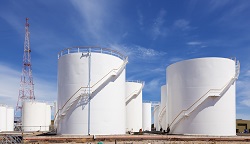New techniques to tailor nanomaterials
Thanks to their extremely small size, nano-structured materials are the key building blocks for fabricating complex devices with desired functions. Being physically or chemically manipulated, they have important applications in different fields, including electronics and energy. Instead of aqueous solutions, an international team of researchers used ambient temperature molten salts and ionic liquids to functionalise nanomaterials within the framework of NANEL (Functional ordered nanomaterials via electrochemical routes in non-aqueous electrolytes). By using non-aqueous solutions, a host of advantages come to the fore for certain materials. These include materials that are not stable in water or cannot be electrodeposited because of the relatively narrow water electrochemical window. The research team successfully developed functional porous anodic oxides, including alumina and titania. To achieve this, researchers thoroughly investigated how to form highly ordered nanoporous templates and studied the electrodeposition mechanisms of non-aqueous electrolytes. In a first-ever demonstration, they deposited ionic liquid ions on a porous alumina template that was grown on an aluminium substrate without completely removing the barrier layer. An important activity was modelling and simulating electrochemical nucleation and growth of different nanostructures. A newly developed model based on multi-ion transport and reactions helped describe the phenomena that take place during ion deposition. Through appropriate treatment at temperatures close to their melting point, metallic nanowires are precursors for growing semiconducting nanowires. Therefore, the melting behaviour of the metallic structures in oxide templates is a key parameter for the subsequent conversion process. For this reason, researchers further explored the effect of the generated mechanical stress during heating on the melting point of the metal nanowires deposited on the alumina pores. According to their research, an extremely high local compressive stress appears because of thermal coefficient differences of the oxide template and nanowires inside the pores. Another achievement was synthesising magnetic oxide nanoparticles and mixed sulphide compounds for sensors and solar cells, respectively. Other than publications in 16 peer-reviewed journals, project results were presented at numerous international conferences. In addition, a joint workshop was organised to disseminate researchers' activities, thus enhancing networking amongst researchers.







